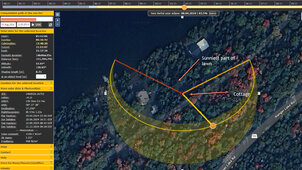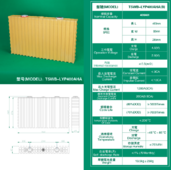Whitty21
New Member
Hi there,
We are in the midst of planning our DIY solar build at our northern ontario camp this summer. We have already purchased a battery (Kedron 24v 300a) and inverter (SRNE 24v All-in One). We are now looking at panels, mounting options, and wiring and have some questions.
System size is small. No electric heat, propane fridge and stove. LED lights, and occasional TV/Microwave/toaster use. We do have a 3/4 1ph jet pump that pumps water up from the lake, that is our only large draw. We also have a generator (firman open frame) that will be hooked up to the inverter/charge controller, provided it doesnt have too dirty of power to trip the switch. If it does we will be looking into inverters.
The panels I am looking at are 2, maybe 3 Q Cell 480w panels. My though here is that they have a High Voc (53.6) so I will have plenty of room on shady days to get over 24v for the battery.
As for orientation, we had thought to mount them on the south east facing roof of the cottage. I have attached a screenshot from SunCalc of the property. It is a large treed hill to the south which is going to limit our efficiency. We had though that we could split the panels between different sides of the roof, but that may end up doing more harm then good with the shadier panel drawing from the sunnier one if I understand my reading correctly. The other option is to put the panels on some sort of ground mount in the north east corner of the lake-side lawn. I am starting to think this may be the best option, though digging a trench for the wire would be a handfull.
As I take it, Wiring 2 panels in series, would be the best option if they are in similar lighting conditions? Am I right in assuming that these panels in series would overpower my inverter, which has a 100V limit?
So if I use the Q Cell, any amount would need to be in series?
Thanks in advance,
Jordan
We are in the midst of planning our DIY solar build at our northern ontario camp this summer. We have already purchased a battery (Kedron 24v 300a) and inverter (SRNE 24v All-in One). We are now looking at panels, mounting options, and wiring and have some questions.
System size is small. No electric heat, propane fridge and stove. LED lights, and occasional TV/Microwave/toaster use. We do have a 3/4 1ph jet pump that pumps water up from the lake, that is our only large draw. We also have a generator (firman open frame) that will be hooked up to the inverter/charge controller, provided it doesnt have too dirty of power to trip the switch. If it does we will be looking into inverters.
The panels I am looking at are 2, maybe 3 Q Cell 480w panels. My though here is that they have a High Voc (53.6) so I will have plenty of room on shady days to get over 24v for the battery.
As for orientation, we had thought to mount them on the south east facing roof of the cottage. I have attached a screenshot from SunCalc of the property. It is a large treed hill to the south which is going to limit our efficiency. We had though that we could split the panels between different sides of the roof, but that may end up doing more harm then good with the shadier panel drawing from the sunnier one if I understand my reading correctly. The other option is to put the panels on some sort of ground mount in the north east corner of the lake-side lawn. I am starting to think this may be the best option, though digging a trench for the wire would be a handfull.
As I take it, Wiring 2 panels in series, would be the best option if they are in similar lighting conditions? Am I right in assuming that these panels in series would overpower my inverter, which has a 100V limit?
So if I use the Q Cell, any amount would need to be in series?
Thanks in advance,
Jordan




